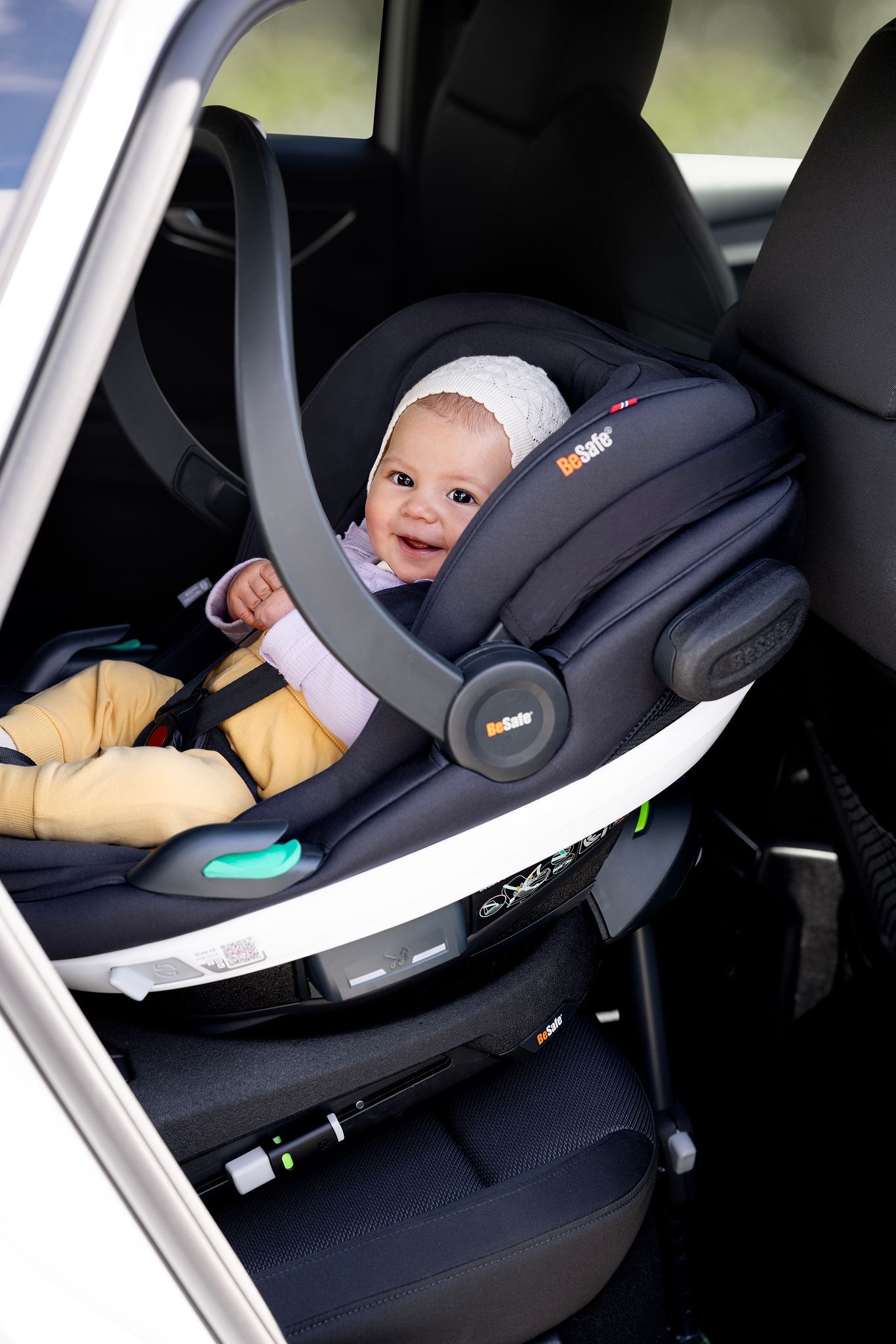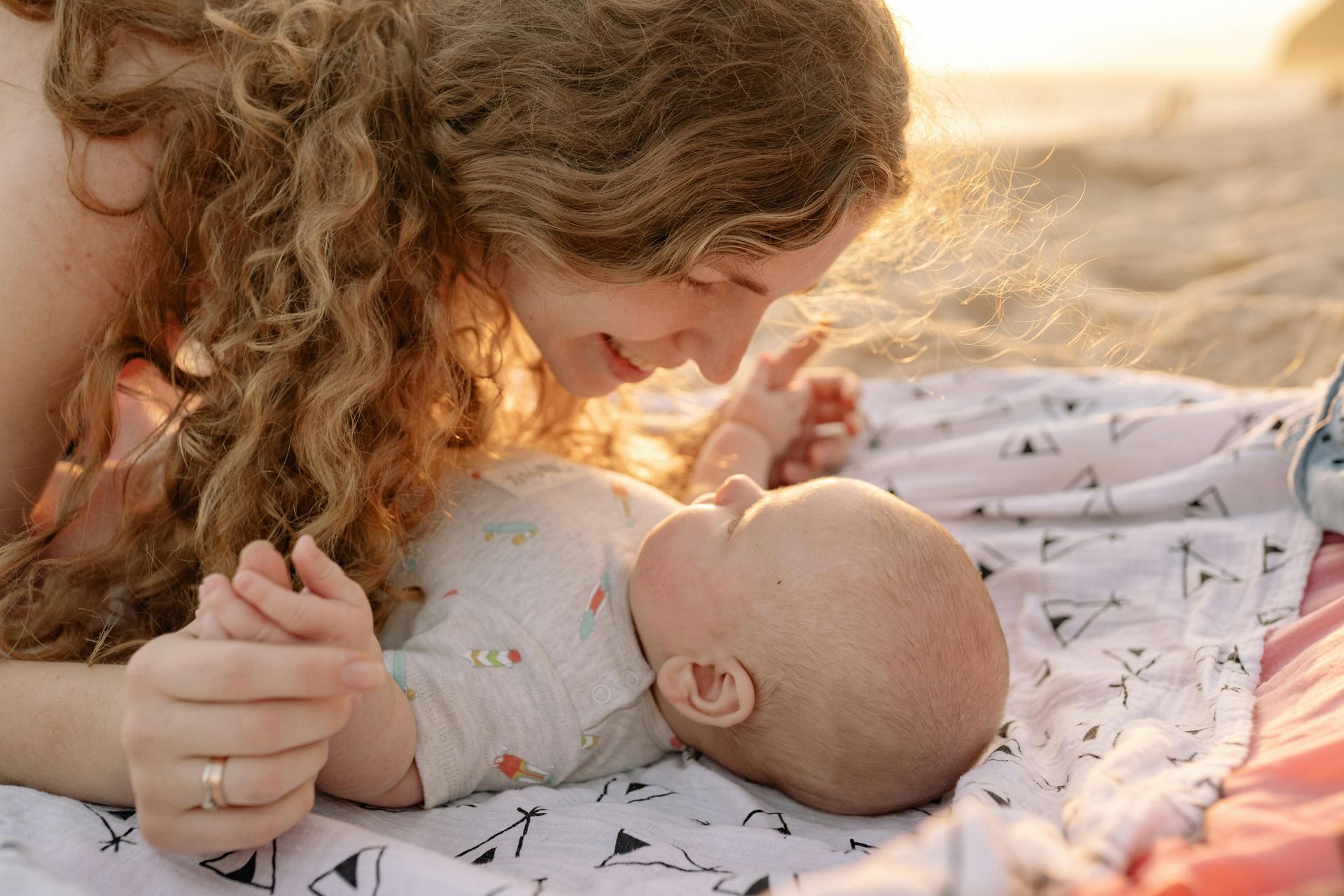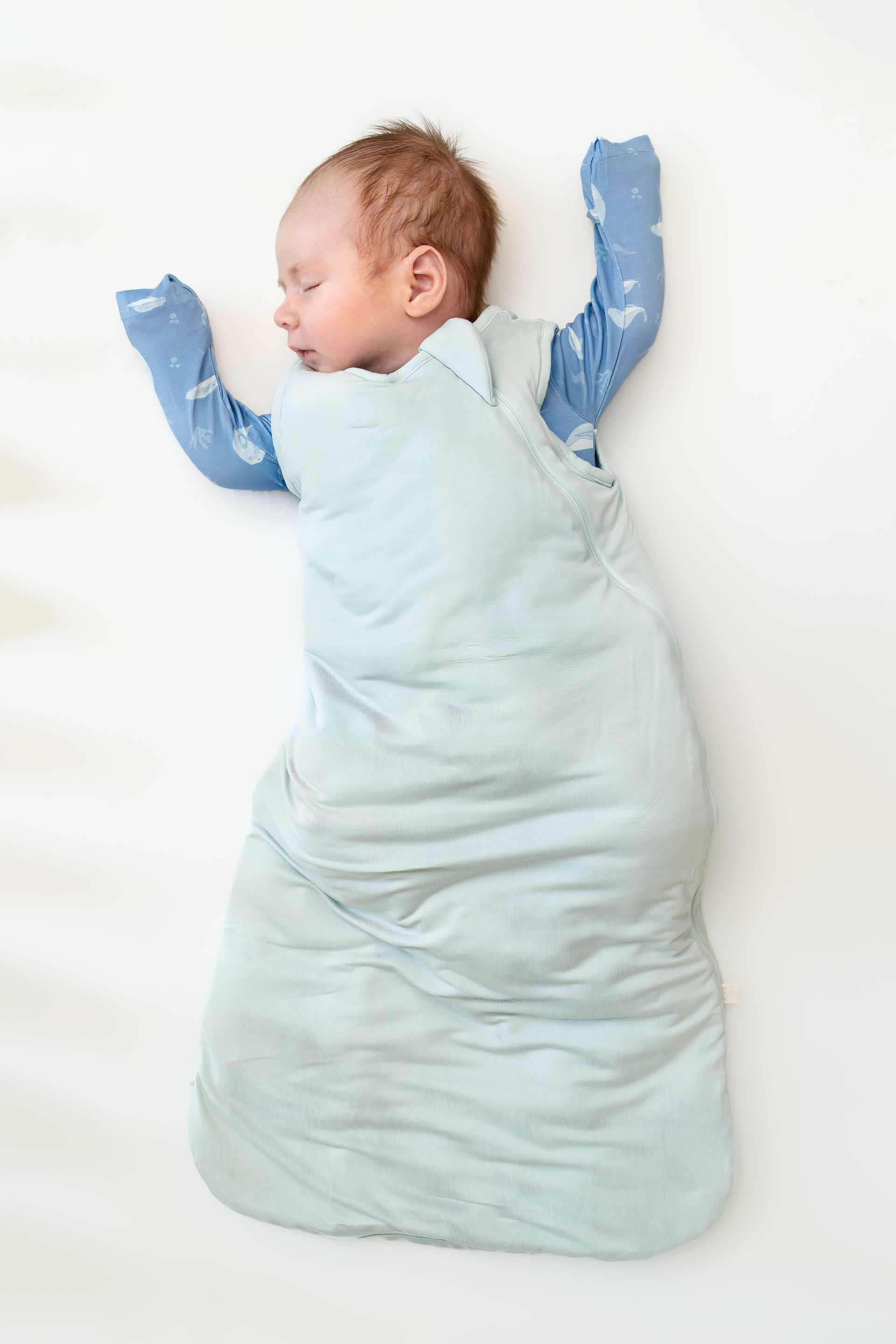Surviving the 4-Month Sleep Regression
lbenjell • January 10, 2023
It's a well-known fact that babies go through many sleep regressions
throughout their first few years of life…and the 4-month sleep regression often takes parents by storm. For a lot of parents, this sleep regression catches them off guard, and they’re left wondering what happened to their once sweet sleeper.
Regardless of whether you were prepared for the 4-month sleep regression or not, all babies will go through this. And how it impacts their sleep depends entirely
on each baby.
When I had my second son, the 4-month sleep regression hit us hard. He went from sleeping long stretches at a time to having trouble simply falling asleep. What once worked for us to get him to sleep well no longer did, and it was a difficult experience.
If your child is already a good sleeper, a regression can be just as hard as it is for those who don’t have good sleepers – sleep regressions don’t discriminate! But the main question I receive from many parents (when they’re up multiple times throughout the night) is, “How do we survive this?!”
What’s going on during the 4-month sleep regression?
When babies are born, their circadian rhythms are immature – instead of their sleep cycles being governed by the natural link to the 24-hour clock, a baby’s sleep is split up into sleep
and awake
periods.
Additionally, their sleep cycles look different than an adult’s. As a newborn, sleep cycles are split in half – deep sleep and active sleep. When those sleep cycles mature around the 16-week mark, they begin to look more like our sleep cycles with various REM and NREM stages which will mean that they will spend more time in light sleep.
So instead of moving from deep sleep
to active sleep, babies will cycle through more stages, and often will wake during one of those transitions.
What can make this sleep regression more challenging is that many babies will wake more overnight, and in an attempt to do whatever it takes to get their babies back to sleep, parents will resort to whatever
works – rocking their baby to sleep, feeding them to sleep, or constantly replacing their pacifier.
And if these things happen without much disturbance to the child’s or parent’s sleep, that’s perfectly fine. But in many cases, habits form and children become used to getting fed multiple times throughout the night or having mom or dad rock them back to sleep.
Soon enough, parents will find that their baby now wants to be rocked, fed, or what have you, at the onset of sleep as well.
And when the 4-month regression passes, those habits stay, resulting in more night wakes or assistance needed to fall asleep.
So what’s an exhausted parent to do?
Understand what’s happening developmentally.
The most important thing to remember is that this is a natural part of your child’s development – it’s normal and temporary. Your child is growing and their brains and bodies are developing!
When you understand this fact, it can help you get through the exhaustion that comes along with the regression.
Also, instead of focusing on band aid solutions or products that promise to solve all of your child’s sleep struggles, try this:
- Continue to follow safe sleep recommendations. Now isn’t the time to add items to your child’s crib in the hopes that they’ll sleep better. In fact, doing so could pose a safety hazard.
- Transition to a sleep sack! Around this age, we want to move away from the swaddle, and transitioning to a sleep sack can help ensure they stay warm while sleeping and serve as a great sleep association.
- Whenever you’re working on improving your child’s sleep, focus on the root issue and make a plan to help them. If you need help with this, schedule a call with me – that’s what I’m here for!
Since circadian rhythms are strongly affected by the natural 24-hour clock, if you have not done so already, it is time to start following a schedule that respects that relationship. This means that you can wake your baby up in the morning between 6-7 a.m., ensure they nap according to appropriate wake windows, and offer an early bedtime. It’s also a great time to create a consistent and conducive sleep space for your little one.
Be mindful of how much your child is eating.
If your child is suddenly waking more throughout the night and feeding, it’s important to take a look at how much they’re eating throughout the day and how well they’re feeding. Since your baby is becoming more aware around this age, it’s not uncommon for babies to become more distracted…especially when they’re eating!
Consult with your pediatrician if you have any questions about how much your child should be eating each day. If you feel that your child isn’t getting full feeds during the day, the answer might not be to feed more at night. Instead, look for ways to ensure your baby isn’t just snacking when they nurse or bottle feed.
If your baby is falling asleep while feeding, for instance, you can try to tickle their toes, undress them, or stroke their face. If they’re simply a distracted eater, you can try feeding them in a quiet space where there’s less noise and activity.
Start gently and slowly encouraging independent sleep.
You don't have to change your baby's sleep routine right away, but you can begin gently and slowly encouraging independent sleep. If you've been putting your baby down for naps and nighttime sleep the same way every day, try to put them down in their crib while awake – even just once a day!
It might not work the first (or second or third) time you do it, but slowly, they’ll get used to falling asleep while they’re in their crib, and it will help them become more comfortable and confident drifting off to sleep in this way.
By changing these small things – eliminating rocking or feeding to sleep – you'll help make sure that no matter how many times your bundle of joy wakes up during the turbulent months ahead, eventually they will learn that they can put themselves back to sleep throughout the night.
If your baby has hit a rough patch in terms of sleeping, don't worry! This stage will pass and your little one will settle into a routine again soon enough. In the meantime, remember that the 4-month sleep regression is temporary and you will get through it.
If you feel like the 4-month sleep regression put a hiccup in your child’s sleep and they never recovered, let’s make a plan of action together! Reach out to me
today to help your child get back on track!

Choosing a car seat is one of the most important decisions you’ll make as a parent. It’s not just about convenience — it’s about giving your child the best protection on every journey . In the UAE, where we drive long distances, face busy roads, and deal with extreme heat, the right car seat matters more than ever. But with so many options, how do you know which one to choose? Here are our top 4 tips to make car seat shopping easier — and safer. 1. PRIORITIZE SEATS THAT UNDERGO THE TOUGHEST CRASH TESTING Not all car seats are created equal. Many parents think if a seat is “legal,” it must be safe — but that’s not always true. ECE R44 : The most basic standard, now phased out in Europe. ECE R129 (i-Size) : Stricter testing with better head, neck, and side-impact protection. The Swedish Plus Test : The toughest crash test in the world — and the gold standard. What makes the Swedish Plus Test so important? It’s the only test that measures neck forces on a child’s body in a crash. Seats that pass prove they can keep neck loads below dangerous limits — a key factor in preventing serious injury. Many car seats fail completely under this extreme test, which shows just how high the bar is. 👉 If a car seat has passed the Swedish Plus Test , you can be confident it offers the highest level of safety for your child. 💡 Remember: Legal does not always mean safe . Go beyond the minimum. 2. CONSIDER YOUR CHILD'S HEIGHT, WEIGHT, AND AGE — EVEN THE SMALLEST ONES Every child grows differently, and size matters when it comes to safety. Preemies and smaller babies : Standard carriers often don’t provide the right fit. They need extra support for the head, neck, and body, plus proper harness positioning. Twins or multiples : Planning seating for two (or more) at once requires careful choice so every child gets the safest setup. As children grow, their height and weight percentiles determine how long a seat will last. We recommend car seats with at least a 25kg weight limit and 125cm height limit , which allow for extended rear-facing travel . Why rear-facing ? Research shows it is up to 5 times safer than forward-facing for children up to 6–7 years old. Better crash force distribution across the strongest part of the body. Superior head and neck protection , preventing the whip-forward motion that can cause spinal injury. Cocoon-like shell protection against front and side impacts. 💡 Bonus for UAE parents: The BeSafe Go Beyond with Preemie Inlay was designed with neonatal nurses to support even the tiniest babies. It features a removable wedge for better harness fit and breathable mesh fabric — keeping your baby safe and cool in our hot weather. 3. MATCH THE CAR SEAT TO YOUR CAR AND LIFESTYLE Your car seat needs to fit not just your car — but your daily routine . Multiple cars? Choose a seat that’s easy to install/uninstall. Growing family? Invest in a seat with a long lifespan that can be passed down. Seat placement? Consider if it will go behind the passenger, in the middle, or side by side with another child seat. Bigger families? Narrow but safe seats can fit 3-across or work well in 7-seaters, without compromising protection. Example from our family setup: Mummy’s car : BeSafe Flex Fix 2 for Sofia (8y) + BeSafe Stretch for Leo (5y). Daddy’s car: Axkid One3 for Leo + BeSafe Flex Fix 2 for Sofia. The Axkid One3 was chosen because Daddy often removes the seat, and installation takes under 30 seconds . 👉 Key takeaway: The “best seat” isn’t the one your friend uses — it’s the one that fits your child, your car, and your lifestyle . 4. DON'T COMPROMISE — BUY FROM A CHILD CAR SEAT SPECIALIST Buying from a specialized retailer ensures peace of mind: They recommend a seat that fits your child, car, and routine . They install it correctly and show you how. If the seat doesn’t fit, they won’t install it — and they’ll help you find one that does. They’ll reinstall it whenever you need , for example when changing cars, at no extra cost. At Safety On Board , we offer 1-1 car seat consultation and hands-on support to make sure your child rides safely every time. FINAL THOUGHTS A car seat isn’t just another baby item — it’s life-saving equipment. Whether you’re bringing home a preemie, juggling twins, or moving a big kid into a booster, the right seat + the right suppor t makes all the difference. If you’re unsure where to start, contact us and book a consultation with us. We’ll help you find the perfect fit for your child, your car, and your family. Because every child in the UAE deserves the safest ride 💛 Sophie Huang is the founder of Safety on Board , the UAE’s first child car seat specialist. She is also a mom of 2 and an internationally certified car seat expert . With a passion for keeping children as safe as possbile on UAE road, she guides parents in choosing and installing the safest car seats. Sophie believes safety can be simple, stress-free, and empowering for every parent.

There’s something magical about a beach holiday — the sound of waves, salty air, and the promise of slow days in the sun. But let’s be honest: traveling to the beach with a baby isn’t exactly a vacation unless sleep is part of the equation. Whether you're heading to a resort, renting a seaside villa, or visiting family by the coast, here’s how to set your baby up for restful sleep — so everyone gets to enjoy that ocean breeze. Step 1: Know That Sleep Needs Don’t Take a Holiday Babies are creatures of habit. Their little bodies thrive on rhythm and predictability — even on vacation. But that doesn’t mean you can’t have fun or go with the flow! It just means that your baby’s sleep needs are still there, and the better prepared you are, the easier it will be to keep things (mostly) on track. Step 2: Your Beach Baby Sleep Packing List Here’s your ultimate baby sleep packing list for a beach trip, broken down by category: Sleep Environment Essentials : Portable travel crib or bassinet – Choose one your baby is already familiar with if possible. Fitted sheets – Bring 2-3 just in case of sand, spills or spit-up. Also bring a gently used one to remind baby of home as he/she adjusts to the new sleep environment. Portable blackout blinds – Beach homes and rentals often have light, sheer curtains. White noise machine or app – Helps block out unfamiliar sounds like waves (yes, they can be loud!) or street noise. Baby monitor (if you’ll be in a larger space or stepping outside during naps). For more on the ideal sleep environment, have a read here . Comfort + Routine : Lovey or comfort object (if age-appropriate and safe for sleep). Sleep sack – Choose a breathable, summer-weight one. Favorite bedtime book – Familiarity brings comfort. Pacifiers – Always bring extras! Nightlight – A soft, warm one if needed for feeds or changes during the night. Weather + Climate Considerations : Lightweight, breathable pajamas – Think cotton or bamboo Fan – If your rental lacks good airflow or AC Bonus Tip: Have a “Nap-on-the-Go” Kit **For beach days that cut into nap time: Clip-on stroller fan Stroller or baby carrier your baby can sleep in Portable white noise machine Extra sun hats + baby-safe sunscreen (for after 6 months old) Step 3: Keep the Routine (Even on the Coast) Try to mirror your bedtime routine as closely as you can. If you usually do bath → PJs → book → feed → sleep, stick with it — even if it’s a quick version. Babies love the predictability, and it helps signal that it’s time to wind down, even in a new environment. Also, aim for naps in a darkened room when possible, especially after a stimulating beach outing. And if one nap has to happen in the stroller under a palm tree? That’s totally okay. Just go back to the routine as soon as you can. Getting There: Travel Day Tips Time your departure around naps if possible Use familiar sleep items (like the sleep sack or pacifier) during flights or drives Offer extra feeds — travel is dehydrating, especially in hot weather Keep expectations flexible – sleep may not be perfect, and that’s fine Beach trips with a baby can be full of joyful memories and restful nights — as long as you plan for sleep. With the right gear and mindset, your little one can stay well-rested and content, giving you more time to soak up the sun (or at least drink your coffee while it’s still warm!). And remember: sleep doesn’t have to fall apart just because you’re away from home. If you ever feel stuck or unsure about how to adjust things before, during, or after a trip, I’m here to help you build a personalized plan that fits your family’s travel style. Book your discovery call here .

October is SIDS Awareness Month, dedicated to raising awareness about Sudden Infant Death Syndrome. It’s a time to educate parents and caregivers on safe sleep practices that can reduce the risk and help protect our little ones.. At Hushabye, safety is at the heart of our brand. Our focus is on providing parents with safe and high-quality baby sleepwear, such as sleep bags, that offer a safer alternative to traditional blankets. What is a baby sleep bag? A baby sleep bag, also known as a wearable blanket or sleep sack, is a specially designed garment for infants and young children to wear during sleep. The primary purpose of a sleep bag is to keep the baby warm and comfortable, but it also serves as a safe and convenient alternative to traditional blankets and quilts in a crib or cot.


